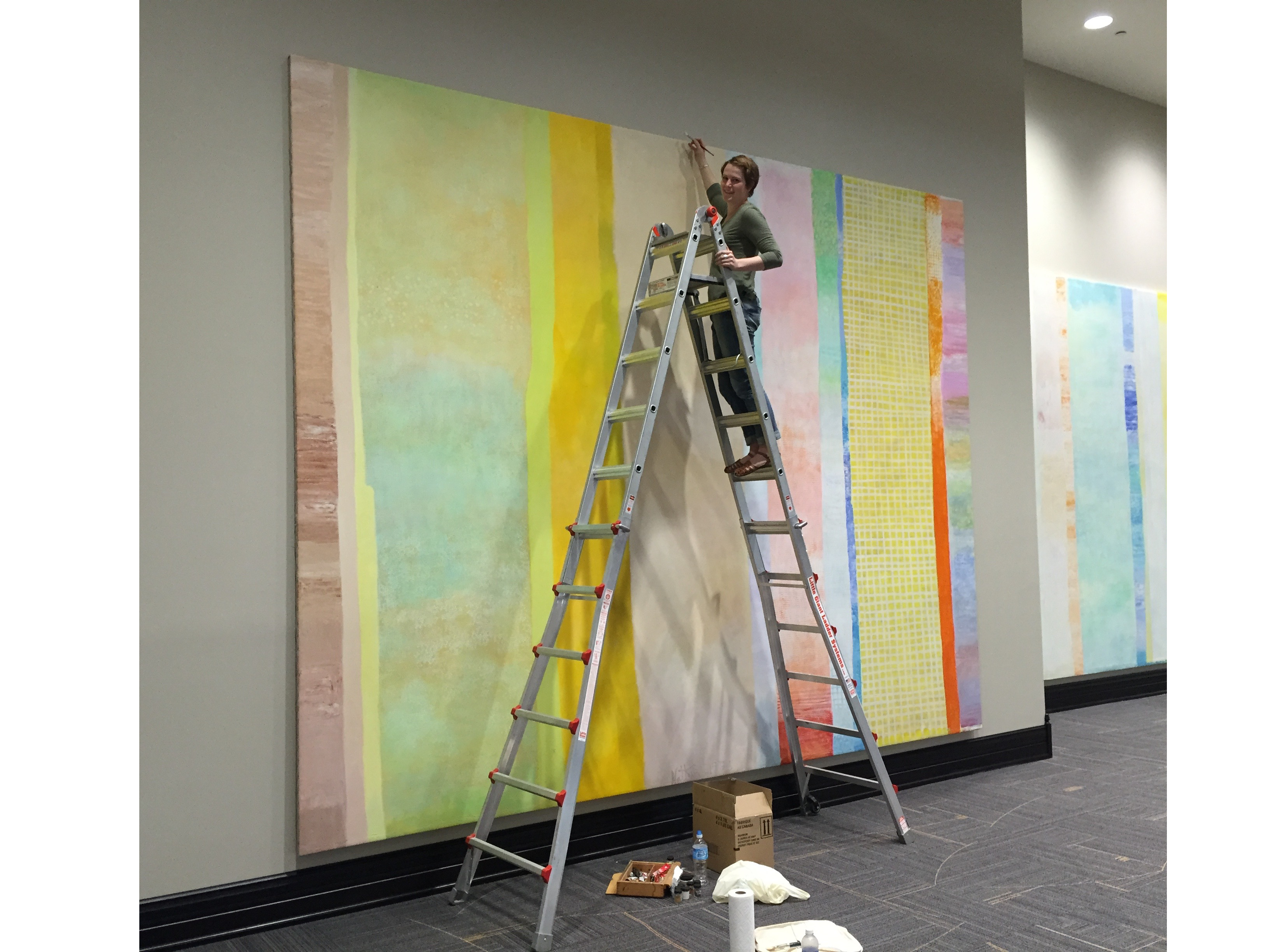Artwork eventually asks for attention. Whether a painting has aged gracefully over decades of hanging above the family fireplace – or has had a cat jump through it – or has been used for target practice on Christmas morning – or the movers have just goofed, it needs the expertise of a qualified conservator. Even without abuse, varnishes and canvases age, leave paintings yellowed and fragile. Not only does the painting not look its best, but it may be at risk of tearing out of the frame completely. While tobacco smoke has been a common culprit of darkened paintings, during the 20th century artists themselves have contributed to the difficulties in the life of a painting. By using non-art materials and techniques, artists have created instability in the paint layers which can lead to premature cracking and lifting of the paint layer, distracting the viewer’s eye.
At a lunch with Ross Merrill, then Director of the Conservation Department of the National Gallery in Washington, DC, our head conservator, Natalie Marshall, was asked, “What do conservators call Modern Art?” Answer? “Job security!” Unfortunately it’s no joke for the paintings or their collectors, and many modern paintings require the gentle hand of a conservator sooner than would be expected of traditional work.
Walls Fine Art Gallery’s Head Conservator, Natalie Marshall, has a degree in Art History with a minor in Chemistry from East Carolina University followed by a year in Russia studying conservation at the Surikov Art Institute where she worked with art conservators on museum and private collections. Western art conservation is ruled by the science of materials: find the problem, develop the solvent, remove the problem, but that perspective has led to, in many cases, over-cleaning and merciless in-painting. The Russian influence teaches that understanding of the painting must come first and that the conservation approach must respect the artist and the work itself, absolutely. Prior even to college, Natalie was in California working with an 80 year old conservator. Experience means a lot, and Natalie has not been satisfied to only have one side of the story. She spent five years in New York City, working on paintings often bound for auction through Sotheby’s or Christie’s by such notable artists as Joseph Albers, Albert Bierstadt, Fernand Leger, John Singer Sargent, Joan Miro, Pablo Picasso, Thomas Moran, and Mark Rothko.
Examination, documentation, treatment, consolidation and in-painting. All her processes are archival and reversible.
Please call the gallery at 304-520-1221 to make an appointment for a conservation assessment either in the gallery or on site.

